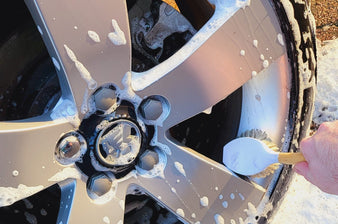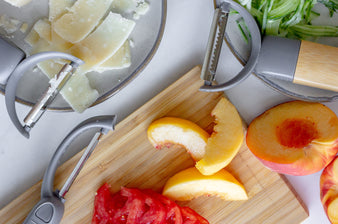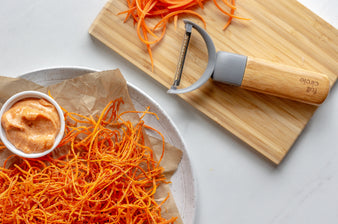What if we can't DIY?
One thing we are constantly struggling with is that sometimes, we have to choose between products that are all somehow going to impact the environment in a way that unsettles us. But it’s about choosing what is important to you. We’re going to use dishwasher detergent as the perfect example here.
They say nothing is healthier and more nutritious than food you cook yourself (but maybe they never met the college us!) and that adage works in green cleaning too: nothing is better for the environment than a DIY solution. So that is, of course, the highest level of sustainability. And if you’re so inclined, this recipe for dishwasher detergent is environmentally friendly, simple, and works well.
But what if you can’t DIY? We talked about how there is an unending list of things that fill up our lives and some of us just can’t find the time or brain power to DIY. What then?
The major green options on the market are powder in a plastic-coated cardboard box, liquid in a plastic container, coated tablets in a plastic bag, and coated tablets in an uncoated cardboard box. Assuming they’re all mostly the same in composition (plant-based, environmentally safe, etc.), it’s the packaging that impacts the planet most of all.
In the end the products with packaging that does the least damage are the liquid in the PLA 1 containers where you can ensure recycling, or the tablets in an uncoated cardboard box where at least the biodegradable microplastics are plant-based and thus, non-toxic.
Here’s to hoping Common Good develops a dishwasher detergent at the refill station, asap.
They say nothing is healthier and more nutritious than food you cook yourself (but maybe they never met the college us!) and that adage works in green cleaning too: nothing is better for the environment than a DIY solution. So that is, of course, the highest level of sustainability. And if you’re so inclined, this recipe for dishwasher detergent is environmentally friendly, simple, and works well.
But what if you can’t DIY? We talked about how there is an unending list of things that fill up our lives and some of us just can’t find the time or brain power to DIY. What then?
The major green options on the market are powder in a plastic-coated cardboard box, liquid in a plastic container, coated tablets in a plastic bag, and coated tablets in an uncoated cardboard box. Assuming they’re all mostly the same in composition (plant-based, environmentally safe, etc.), it’s the packaging that impacts the planet most of all.
| Product | Pros | Cons |
| Powder in a plastic-coated cardboard box | Uses very little plastic on the coating | Unless you send your plastic-coated cardboard to a special facility it is virtually unrecyclable and thus, ends up in a landfill |
| Liquid in a plastic container | The plastic containers are typically made from recycled PLA 1 and 2 and thus, widely recyclable | If the plastic containers go unrecycled, that’s a lot of plastic containers in a landfill or ocean |
| Coated tablets in a plastic bag | The plastic bags use almost 2/3 less plastic than plastic containers and the coated tablets are biodegradable, plant-based plastics that dissolve in water | Unless you send your plastic bags to a special facility, they are not often recycled on a local level and thus, end up in a landfill or ocean and some microplastics from the plant-based plastic coating end up in the water supply or ocean |
| Coated tablets in an uncoated cardboard box | The uncoated cardboard is easily recyclable, and the coated tablets are biodegradable, plant-based plastics that dissolve in water | Some microplastics from the plant-based plastic coating end up in the water supply or ocean |
In the end the products with packaging that does the least damage are the liquid in the PLA 1 containers where you can ensure recycling, or the tablets in an uncoated cardboard box where at least the biodegradable microplastics are plant-based and thus, non-toxic.
Here’s to hoping Common Good develops a dishwasher detergent at the refill station, asap.




